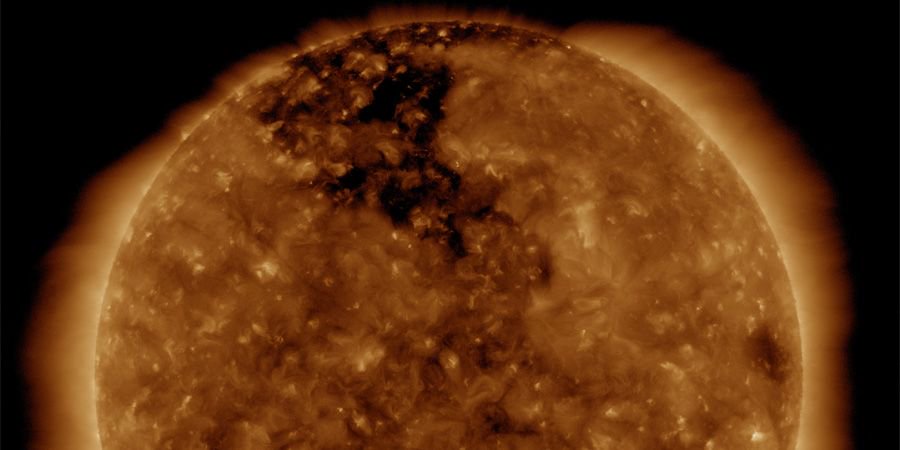The sun is currently sleeping. Its surface and corona are relatively quiet as it prepares to ramp up for an expected phase of high activity in 2025. This past October, the ESA’s Solar Orbiter was able to sneak in a close-up peak at the Sun as it slumbers.
On October 12th the European Space Agency’s Solar Orbiter flew to within less than a third of the orbit of the Earth around the Sun. This was the closest flyby yet that the mission has performed, and it was especially lucky timing because at the time of the close passage it was headed in the direction of the Earth. This allowed the orbiter to transmit an unusually large amount of data. This enabled the ESA to produce a movie of this sun’s corona as imaged by the Solar Orbiter.
To give you a sense of scale, each pixel in the image is 105 km across. That means about 17 Earths would fit side by side going across the image.
The movie shows the Sun’s corona, which is its outermost atmosphere. The corona extends up to twice the radius of the Sun and has a temperature of over a million degrees. But the density of the corona is so low that you wouldn’t feel that scorching temperature.
The movie produced by the Solar Orbiter shows the arcing and curving loops that characterize the plasma of the corona. In those regions the plasma is held in place by magnetic fields that punch in and out of the surface of the Sun. When the Sun launches a solar flare or a coronal mass ejection, it originates here in the corona. But astronomers aren’t exactly sure how this process plays out, except for the fact that it involves the breaking of extremely strong magnetic fields.
One of the missions of the Solar Orbiter is to understand the dynamics of the corona and how it can launch flares and ejections. That will help astronomers better understand the physics of the Sun itself and make more accurate models and predictions of solar weather.
The Sun’s corona is currently relatively quiet, but it won’t say that way for long. Every 11 years the Sun peaks in activity, and the next peak is expected around 2025. So this may be our last glimpse for a while of a sleeping Sun.
The video is available on the European Space agency’s website here.

